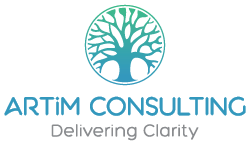Conventional thinking holds that we make decisions based on rational evaluation of alternatives. We objectively evaluate alternatives and choose one that promises a better outcome than the others. The tool we often use to help us make these decisions is the business case. Typically we look at the cost of the alternatives compared to their benefits and choose one that promised us a higher benefit relative to its cost. A business case can be simple or very elaborate. In personal life we might use something like a business case to compare buying a new mobile phone instead of continuing to use the one we have. In organisational situations we use business cases to make choices between alternatives courses of action, one of which might be to do nothing.
For a project, a business case might include the background, expected benefits, expected costs, alternatives considered and risks associated with the project. In addition, the business case might also include measures of performance to help us keep the project on track to ensure that expected benefits are actually realised. You may have noticed from your experience that business cases are not always as objective as we would like them to be. There is a grain of truth in the saying that the test of a good accountant is whether they can make the numbers say what we want them to say.
So let’s take a look at some of the challenges of building a sound business case. Let’s assume that we have the ability to gather all the information we need, i.e. we know the immediate and ongoing costs, resources required, the benefits we expect from the project and so on. The very first difficulty is deciding, amongst all of this information, what to include in our business case and what to ignore. Since we can’t possibly include all of the information, and this may not be worth doing, we must use our judgement to decide what to include. At least some subjectivity is involved in making that decision.
The second difficulty is assessing the quality of the information we have, i.e. whether we can, within reasonable limits, predict what will happen when we implement the project. We know that organisations are complex systems, so it is very unlikely that the project will turn out exactly as planned. Consider also that the environment is constantly changing, quite possibly in response to the very project we are talking about. It is likely some outcomes are not what we expected. We typically address this problem by trying to reduce the impact of something going wrong. There again we make subjective choices about which events to consider.
But these difficulties are dwarfed by another one. The person who makes the decision is a human being. And of late the assumption of rationality in human decision-making is being viewed with some scepticism.
We know that, within the first few seconds of our meeting someone, we tend to make judgements about that person and that these judgements are hard to change. It turns out there is some science behind this apparently odd behaviour. Antonio Damasio is a neuroscientist who explores the relationship between the body and the mind. He is known for his Somatic Marker Hypothesis (SMH), which proposes a close relationship between mental states and bodily conditions (somatic markers). Damasio examined patients with damage to the part of the brain responsible for feelings. These patients are perfectly normal except that they don’t feel any emotion. When they are presented with alternatives, they are able to quite logically describe the pros and cons of each. But when asked to make a choice between the alternatives, they find it very difficult to make a decision. Emotions appear to have a strong role to play in our decision-making. Other research points in the same direction, i.e. that we might think that we make decisions rationally, but we actually make decisions based on emotional criteria. What we then do is quickly build the rationale for the decision, to support our belief in rationality. SMH probably explains why handshakes are often in the news, as they have been recently!
The value of business cases, except in very constrained situations, seems to lie in structuring conversations rather than making decisions. Most transformational decisions appear to be made on the basis of what seems to be the right thing to do, rather than the one that promises to most efficiently deliver our goals. Consider the executive team in an organisation presented with a proposal for adopting a new strategic framework, one that could well shape the organisation’s strategy and its execution. There is very little guidance available to help them make a decision when it comes to such frameworks. And if most of the team is going make their personal choice based on their emotional response to the proposal, then any guidance would be of limited use anyway. So what tends to happen is that a consensus is created, based on which a decision is made. Research shows that strategic projects have a less than even chance of succeeding. Is that surprising, based on what we have just seen?
Let me know what you think.
________________________________________
If you are interested in learning more about organisational alignment, how misalignment can arise and what you can do about it join the community. Along the way, I’ll share some tools and frameworks that might help you improve alignment in your organisation.

